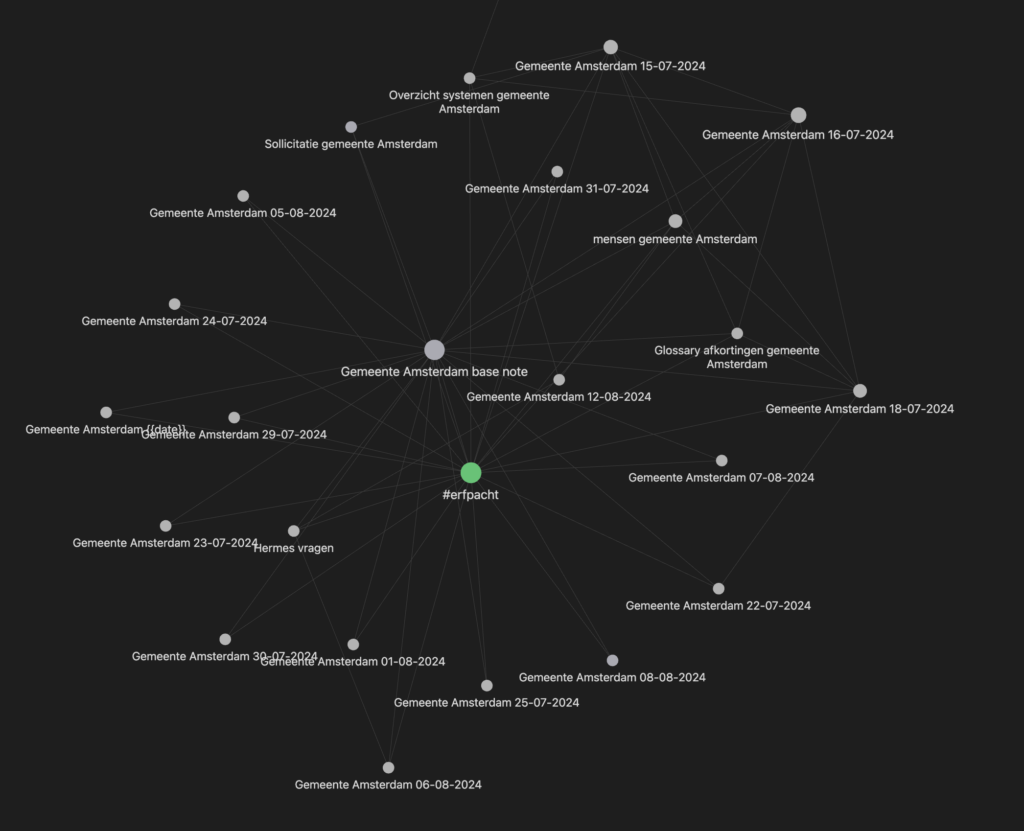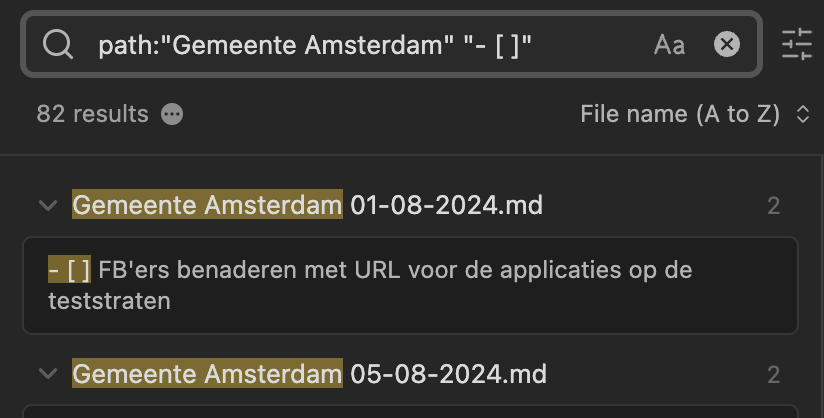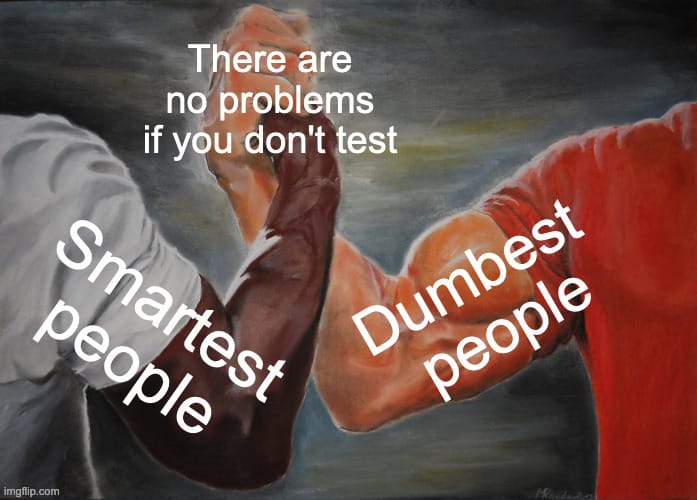My new superpower at work

I’ll talk about what I do first and about the tool I use last, because y’all start salivating as soon as a specific tool is mentioned. I found that out when I wrote a short post on LinkedIn about my newfound superpower at work. People in the comments latched onto the tool first, and not onto the actual superpower.
Everybody either agrees with my tool of choice or they feel compelled to mention their own tool which is surely better than mine. It’s not important, it’s just a tool! Pls. Stop it.
Also, I have by no means discovered a new technique here. Smarter people than myself have probably already solved this problem and wrote books about it. This is just my account of events. Do with it what you will, you just happen to be on my corner of the internet. I’m queen here!
The superpower is this: I’ve finally found an efficient way to process the boatloads of information I receive at work into a system that’s not in my way. The fact that the system is “not in my way” is extremely important to me. Each time I have to make a small decision about how to structure information, that’s a disturbance in my flow of thinking. Avoiding small disturbances is key. Fire and forget, and trust that you can retrieve the information you need from your system of choice.
Whatever tool you choose to try this out with, it has to have the following characteristics:
- excellent search function to retrieve whatever you write down (so, think about future you and write down keywords in your notes that future you would search for)
- other ways of structuring information that do NOT involve you manually placing files in a certain structure. Think of: using tags, using templates, graph views, linking notes to each other.
What I also find important, but you might not care about:
- I own the files. My files are markdown files that are on my computer and in iCloud. If my tool of choice goes to shit (looking at you, Evernote!), moving to another tool is easy.
The superpower flow
I recently started a role as test coordinator. As a new hire, I had a shitload of information to digest. The architecture, the applications themselves, how people need each other, who knows what, what tests are already there, etc.
I talked with a lot of people. I listened in on conversations. I looked at a lot of documentation. I saw more architecture diagrams than I wanted.
Any information that comes my way has to go through my filter: what do I need for my testing quest? (I have a very specific problem to solve right now.) I need to build my own understanding of the situation, so I need to sift through everything that I see, read and hear.
In the past, I used to rely mostly on memory. I did document some parts in Confluence, but there were obvious leaks with this approach.
Now, I use the “second brain” approach. Whenever I’m reading something, whenever I’m listening to people, you can be sure I’m taking notes. I take notes with that filter in mind: I write down everything I think I might need later. As I can type very fast, I write down some parts verbatim, other times I write a very short TL;DR.
I don’t worry about structure in my writing. I make an H2 heading for every meeting I’m in and just write down shit I think I need later.
If I’m reading documentation, I put the title of the doc and a timestamp in my notes.
If people are e-mailing me or chatting me, and there’s useful stuff in there, it gets copy-pasted into my notes. It’s very important that the notes are the one place to gather info, otherwise you still have to go over multiple systems.
I write down everything that I think is interesting, without worrying too much whether it’s going to be useful.
The reason I don’t worry about “TMI” and structure is that I can place my trust in the excellent search function of my tool.
The only structure I impose on myself is that I create a new note every day. The title of the note is {{Place of Work}}_{{date}}.
I also put a tag in my note with #{{project name}}, and I link back to some “core notes”. The core notes are, for example: a list of people I work with and the main responsibilities of those people. I also have specific notes of applications that are important to my testing quest.
When I have a task that comes out of the notes, I use a checkbox and then write the task. With a specific search function (based on the very little structure I do impose, namely the {{Place of Work}} in the title) I can aggregate a list of all my to-do’s with very little effort. So I don’t even have to worry about structuring my to-do’s!
All in all, this process feels like a superpower exactly because it feels effortless. I don’t have to expend energy to worry about the structure, that’s all very minimal.
Now I can just query my own stuff when I have a question. It doesn’t always yield an answer, but then I know that I have not asked this question before!
With my line of work, cognitive work, the hard part is often that the next step is unclear. Gathering all the info, putting it through my own filter, helps with making the next step clearer.
My tool of choice
Alright, the boring part that everybody confuses with the interesting part. I use Obsidian as my tool.
I love Obsidian a lot, don’t get me wrong. It’s the first note-taking tool that I keep using, and my appreciation for it keeps growing. Before Obsidian, I tried: Day One (proprietary files, yikes!), Notion (too fancy!), Apple Notes (too basic!), Evernote (fuck this company!). They all sucked in their own way for what I needed. Obsidian is paid if you use it for work purposes, something I only learned about last week. I purchased a license, it’s worth the money to me.
I’m probably underutilizing the tool, I only use:
- the search function
- linking notes
- templates
- graphs (rarely)
- tags
- kanban boards (for my nutrition coaching company, not for this superpower)
A more advanced Obsidian user can probably do a lot more, but I’m letting that happen organically.
I just like that the tool is not in my way. Obsidian relieved me of having to impose structure, something that’s always irritated me when working with computer files. I cannot structure my thoughts if I don’t see the structure yet. When I started using Obsidian, I also started learning about Zettelkasten.
This set me onto the whole “second brain” path, and this is what led me to discover this new superpower at my new job. It’s just something that I wanted to give a try, “take notes like a maniac, see if it’s useful” and it turned out to be totally amazing.
Again: it’s not about the tool! If you have another tool in mind, please, use that one. I don’t give a rats ass. Don’t waste your energy trying to convince me to use another tool, I’m not asking for it.
My graph view right now. It’s still quite small as I’ve started the role a couple weeks ago.

The search query I use to find my to-do’s and questions that I need to find answers to. The query works because I only put these tasks in files with “Gemeente Amsterdam” in the title. You can also use an inline code block in Obsidian to aggregate the search + results.
I’m probably not being entirely clear about my process, so if you have questions, please ask!





Comments ()